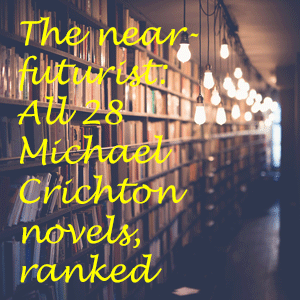We’ll never get another novel from Michael Crichton (1942-2008), unless another manuscript emerges from his old computer files as if by magic – as most recently happened with 2017’s “Dragon Teeth.” But at least we can revisit them. In this unofficial Summer of Crichton with fresh “Jurassic” and “Westworld” stories on the big and small screens, you might be inspired to do so.
Here are my rankings of all the techno-thriller progenitor’s novels, from pulpy to prescient, whether writing under his own name or pseudonyms. I’m starting with the worst, but don’t worry, they get better fast.
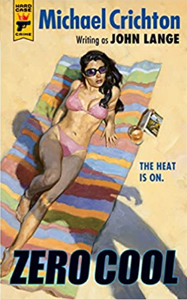
28. “Zero Cool” (1969), as John Lange
In the fourth of the John Langes (known on Crichton’s website as the Med-School Years novels), a vacationing doctor gets roped into a death-defying adventure starting with a gunpoint demand to perform an autopsy. Crichton doesn’t believe in what he’s writing here, even though he repeats the random-dude hero premise from his second Lange book, “Scratch One.” Cover girl Angela is low on characterization even by femme fatale standards, and Crichton doesn’t do much with the cool (in terms of weather) ruined city of Alhambra after its encyclopedic intro. It’s hard to believe this is the same author who wrote “The Andromeda Strain” (and in the same year, no less). (Full review.)

27. “Easy Go” (a.k.a. “Last Tomb,” 1968), as Lange
In the third Lange novel, Crichton introduces a protagonist who is a proto-Indiana Jones — or, more accurately, a tomb raider who would likely be Indy’s enemy. This guy assembles a group of people to help him find and retrieve a treasure in Egypt. The setup is decent, as are the descriptions of pyramids, mountains, cemetery cities and a Nile River that is the region’s lifeblood. The final act features the requisite ancient traps en route to the treasure, but in an oddly flat way, bizarrely lacking the thrills of daring escapes. As for what happens with the treasure, you’re unlikely to find a more anticlimactic result, even if the title hints at it. (Full review.)
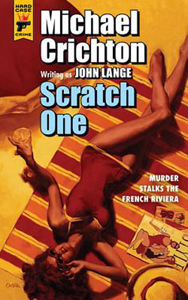
26. “Scratch One” (1967), as Lange
The second Lange novel, as noted, features a dude going about his business in Europe when bizarre circumstances force him to be an action hero – which he dutifully is, but only because the book says so. Several introductory chapters describe the crosses, double-crosses and triple-crosses of the international spy game. This serves to make a reader confused as heck even before we meet the protagonist. The settings of the French Riviera and the climactic Formula One race are the main reasons to check out this wildly uneven work. (Full review.)

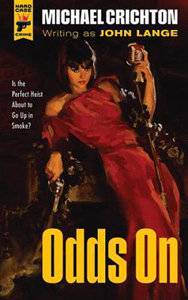
25. “Odds On” (1966), as Lange
The first Lange novel, and therefore the very first book Crichton wrote, centers on a grand hotel safe heist in the vein of “Ocean’s Eleven,” where the three thieves are halfway decent fellows. He adds a mathematical twist: The thieves carefully study the odds and plan things out in detail before they make their moves. The concept outstrips the execution. But, especially considering that Crichton cranked this out to make some side cash during medical school (a process he’d repeat seven more times under the Lange moniker), the author’s potential is evident from the start. (Full review.)
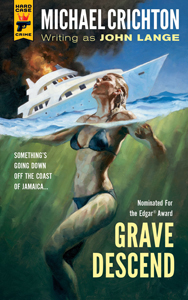
24. “Grave Descend” (1970), as Lange
The setup for this seventh Lange novel is tasty, involving a treasure on a sunken ship near Jamaica. Crichton draws upon his own sometimes-harrowing experiences while diving (as chronicled in his nonfiction work “Travels”) to pen some thrilling chapters. The protagonist is a professional shipwreck diver, rather than a random dude as in most Lange novels, but his life-or-death adventures are more than he bargained for, including beastly scares in the jungle. The villains’ schemes don’t quite coalesce and the story ends abruptly, like it’s missing a final act. (Full review.)
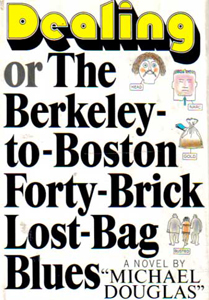
23. “Dealing: Or the Berkeley-to-Boston Forty-Brick Lost-Bag Blues” (1970), as Michael Douglas (with brother Douglas Crichton)
This book is to Crichton what “A Scanner Darkly” is to Philip K. Dick: his commentary on drugs and the drug war. Of course, it’s not nearly as good or as trippy as PKD’s classic. It’s quite a bit lighter and relatively down-the-middle. Even when writing a drug novel, Crichton is a strait-laced fellow. “Dealing” does provide insight into the dangers – from corrupt authorities and other black-market competitors – of this way of life. But if the Crichton brothers had something more original on their minds, it doesn’t emerge in the text. (Full review.)

22. “Micro” (with Richard Preston, 2011)
At the other end of his career, we have Crichton’s other collaborative novel, although this one was not planned that way. Crichton died in 2008 with a third of “Micro” finished, along with notes for the rest of the story. His estate selected adventure writer Preston to finish it. This is why the book starts with scientific asides and a lot of promise, then turns into a simple adventure. Well, not a totally simple one: After all, not every book shrinks its protagonists to an inch in height. Preston does stay true to the scientific principles laid down by Crichton, including our heroes being able to float and glide, since air pressure is significant when you’re micro-sized. (Full review.)
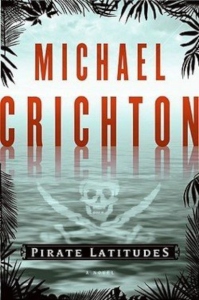
21. “Pirate Latitudes” (2009)
This is a history lesson snuck into an adventure novel. A layperson will come away with a wealth of knowledge about the geopolitics of the 17th century Caribbean islands and the relative morality of pirating culture. Crichton didn’t plan to publish this one, which he started in the 1970s; it was discovered on his computer after his death. Had he lived, we probably wouldn’t have this novel, although of course we’d have different ones. Likely better ones. Still, “Pirate Latitudes” certainly has enough thrills and historical insights to be worth publishing. (Full review.)
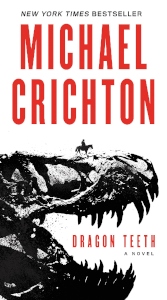
20. “Dragon Teeth” (2017)
This is the second – and presumably last – of the posthumously “found on his computer” novels. The marketing tries to cash in on “Jurassic Park” by putting a T-rex skull fossil on the cover, but it’s actually about rival fossil hunters in the 19th century West – Marsh and Cope. These are real people, although the specific adventures of Yale student Johnson are fictional. As with “Pirate Latitudes,” this isn’t Crichton’s A-game, but it is a fun way to learn about history. Steven Spielberg agrees, as he has acquired the rights to make a cinematic version. (Full review.)

19. “Timeline” (1999)
Along with no-brainers “Jurassic Park” and “The Andromeda Strain,” this is surprisingly the third Crichton novel in National Public Radio’s reader-voted list of the past century’s 100 best thrillers. I’m very much in the minority for ranking it this low. I don’t hate it – and it’s a masterpiece compared to the film adaptation – but I didn’t get into the flow of Crichton’s writings about medieval France. Granted, I absorbed the notion that it was a different time. For one thing, everyone was strong and muscular. You had to be just to survive the day. The author openly admits in his end notes that his invention of a time-travel process with “quantum foam” is mumbo-jumbo. Acquiring ancient DNA and using it to clone dinosaurs is BS too, but he sold it that time. (Full review.)
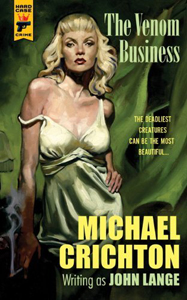
18. “The Venom Business” (1969), as Lange
The fifth Lange novel is unusual in that it’s quite long – for better or worse. Although it’s a slow burn by the standards of pulp novels, it kept me interested the whole way. Crichton includes a fascinating aside about the Chunnel, an under-the-water traffic tunnel linking England and mainland Europe that was later constructed for real. Crichton spends an uncharacteristic number of words on characterization and personalities among interlocking heroes, antiheroes and villains who romp across Mexico and London. It’s as if he’s practicing this skill. Even though no one labels Crichton a great novelist because of character writing, he ain’t half bad at it. (Full review.)
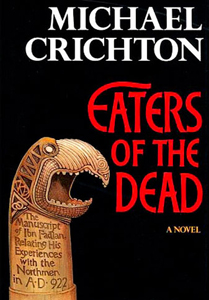
17. “Eaters of the Dead” (a.k.a. “The 13th Warrior,” 1976)
As fans know, Crichton wrote this novel on a dare from a friend who said the epic poem “Beowulf” was boring and it would be impossible to make it not boring. Did Crichton win the bet? Well, there are bigger fans of “Eaters of the Dead” than me, but it’s certainly the best modern-pop-culture spin on “Beowulf” that exists. Crichton mostly writes in accessible modern language, but he doesn’t lose the flavor of 10th century Viking culture. He draws upon real history and uses his imagination to fill in the gaps. Crichton himself eventually forgot what’s genuine Beowulf lore and what’s his own invention, and readers won’t be able to tell the difference either. (Full review.)

16. “Next” (2006)
Crichton’s last fully completed novel is also his weirdest. He challenges himself to write not a straightforward narrative, but rather a scrapbook of sorts, complete with “news clippings.” He mostly achieves his aim of illustrating the absurdities of genetic engineering by alternating among various tales that only interlock by random chance. By chronicling a monkey-boy, a super-smart parrot and a poor schmo who is nabbed by the corporation that owns his genes, Crichton illustrates that robust genetic engineering (we’re going way beyond domesticated dogs and edible corn) will lead to cultural insanity. To calm our nerves, the end notes explain how difficult it is to make breakthroughs in this field. (Full review.)
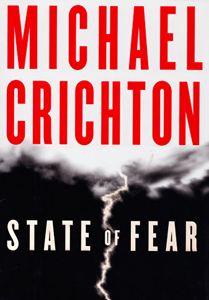
15. “State of Fear” (2004)
Come to think of it, Crichton’s penultimate full novel is pretty weird, too. Daringly, he presents a well-researched case that climate change is overhyped, as are the notions that humanity can or should take steps to do anything about it. Knowing this wouldn’t be received well, he didn’t want to write the novel, but a friend insisted he should, as he might be respected enough to make an impact. As it turned out, the novel was largely hated. But actually, the reason it’s weird is because of the plot wherein climate change believers purposely create a fake global catastrophe. While it’s valid that climate change believers desire to maintain their status, Crichton stretches to make a fictional thriller out of what’s essentially a provocative speech. (Full review.)
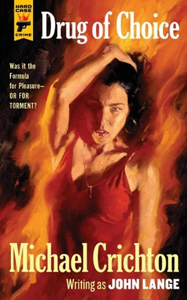
14. “Drug of Choice” (a.k.a. “Overkill,” 1970), as Lange
We’re on a kick of weird novels in the middle of these rankings. The sixth Lange novel is a ton of fun. As is often the case in the Langes, an average guy is thrown into a crazy situation. Caught in a plot that could be made into a good film by an idiosyncratic director, he finds a weird-science branch within the corporation he works for, then tries to expose it. Bizarre hallucinations at a Caribbean resort make this a trippier novel than “Dealing,” although “Drug of Choice” is overlooked in that regard because of a turn toward sci-fi that sets it apart from the other Med-School Years novels. (Full review.)

13. “Binary” (1972), as Lange
The Lange books are essentially Crichton’s practice novels; for years, many people weren’t even aware Crichton was the author (and he was fine with that). But the eighth and last entry, “Binary,” was published under Crichton’s own name around the time of “Jurassic Park.” Short enough to read in one sitting, “Binary” is crisply written and accessible. Crichton presents an accidental prototype for TV’s “24,” with a ticking clock, a smart government agent hero, and a terrorist scheme to target the Republican National Convention in San Diego. If you want to try out the Langes, start at the end, then work your way backward if you’re hooked. (Full review.)
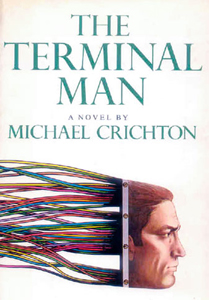
12. “The Terminal Man” (1972)
Crichton wrongly predicts that specialized brain surgery would become mainstream and lead to mind-controlled people – or to put it another way, people who are victims of their own minds. The fact that he overestimated advancements in knowledge about the brain doesn’t make “Terminal Man” a bad novel, just a rare novel within his catalog. Harry Benson’s plight and the responses from harried doctors and detectives give this book an appealing hardboiled vibe, carrying over from Crichton’s pulpy Lange novels but with superior writing quality. (Full review.)
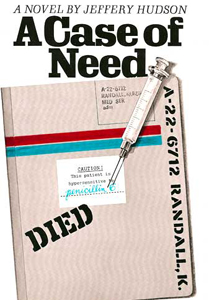
11. “A Case of Need” (1968), as Jeffery Hudson
Crichton’s only novel under the Hudson name outlines his views on the legality/illegality of abortion in this time shortly before Roe v. Wade. He does so in a calm and logical fashion in an appendix, and branches into other controversial medical topics, too. It’s a hint that he had gotten med-thrillers out of his system and was ready for new topics (although he would return to this genre on screen with “Coma” and “ER”). The story itself isn’t about abortion as much as one would think, although Boston law enforcement’s religious stance against the practice is an ever-present backdrop. It’s more of a hardboiled mystery, with Dr. Barry having to play impromptu investigator in order to clear his innocent friend’s name, since no one else will do it. Coming after the pulpiest Langes, this is Crichton’s most polished work up to this point. (Full review.)
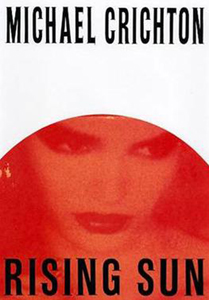
10. “Rising Sun” (1992)
“The Terminal Man” is about a scientific fear that petered out, and “Rising Sun” is about a cultural fear that Japan would “buy up” the U.S., thus wiping out America’s culture and power status. That also didn’t quite happen, although it remains compelling to read about the subject. Crichton’s arguments about international trade and accompanying laws are sometimes fascinating – and sometimes over my head. Though not usually relating specifically to Japan, political debates about trade laws remain ubiquitous, so “Rising Sun” isn’t totally outdated. But its core appeal is the potboiler of a murder mystery, as probed by John Connor (not the “Terminator” hero), whose knowledge of Japanese culture proves essential. (Full review.)
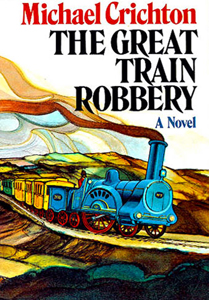
9. “The Great Train Robbery” (1975)
Working somewhat from a real historical train robbery, Crichton goes almost to the level of Joss Whedon in “Firefly” in bringing to life a time and place (mid-19th century London) via words and customs. A small person who can slither through small spaces is a “snakesman,” for example. He’s one of several people who will be key in pulling off the titular heist. For a long time, this is more of a procedural than an adventure, but you’ll know how to pull off a grand crime by the end of it. By the same token, you’ll likely not want to go to the insane lengths of Edward Pierce and his men. But you’ll admire their guile. (Full review.)

8. “Prey” (2002)
The standout among Crichton’s hit-and-miss 21st century publications is also the most cinematic of his works to not be adapted to the screen. (The awful movie version of “Timeline” in 2003 caused Crichton to institute a policy of not selling the rights to his books anymore.) Swarms of nanobots could be easily rendered with CGI today – the locust swarms in “Jurassic World: Dominion” reminded me of this — and a good director could make them scary. Crichton achieves a fearful mood with the written word, as the result of a swarming leaves you as dead as if you’re attacked by a T-rex. Amid mysterious corporate intrigue, tension mounts for people trapped in a desert-based facility surrounded by creepily intelligent swarms. As with the “Jurassic Park” novels, the danger of a localized outbreak quickly threatening the whole world is palpable. (Full review.)
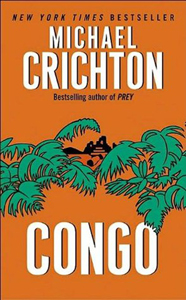
7. “Congo” (1980)
A lot can go wrong-o when you’re in the Congo, as our adventuring heroes discover in this book purposely patterned after “King Solomon’s Mines.” Amy, the sign-language-using gorilla, is Crichton’s best character this side of “Jurassic Park’s” Ian Malcolm, and her friendship with POV character Peter is sweet. Crichton ably breaks free from male protagonists with headstrong Susan Ross. The corporate-backed group aims to find valuable diamonds as they trek across the huge continent of Africa, knowing the fabled Lost City of Zsinj might be protected by killer gray gorillas at journey’s end. Crichton’s interest in satellite communications that were cutting-edge at the time now plays as dated, but so what? I enjoy time-capsule peeks into history. (Full review.)
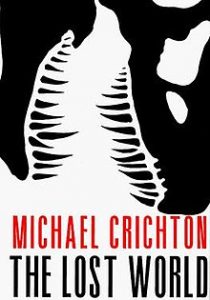
6. “The Lost World” (1995)
I like Crichton’s “Jurassic Park” sequel a little more every time I revisit it. Sure, he famously didn’t want to write it; he kind of did it as a favor to Spielberg, who couldn’t not make a film sequel for his demanding audience. But “The Lost World” is by no means a phoned-in effort. This time around, the author digs into the theory that dinosaurs’ behavior, rather than an asteroid strike, caused their extinction. It’s a neat way to make us think about humans’ destructive behavior. A reluctant Malcolm and his gung-ho compatriots thoroughly plan for their visit to Isla Sorna, yet the life-or-death scrapes soon commence. On this island that’s gone back to the dinosaurs, Crichton taps into a pure man-versus-nature vibe a la Arthur Conan Doyle’s book of the same name. (Full review.)
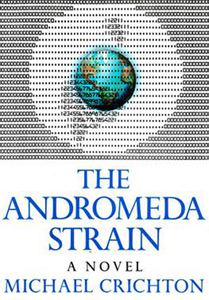
5. “The Andromeda Strain” (1969)
Crichton wrote this first novel under his own name in a reportage style upon advice from his editor. I can’t find the editor’s name, which is too bad because he deserves credit for setting Crichton on a path where he’d pen many great techno-thrillers. Interestingly, he used a lot of true research on future novels, but for “Andromeda” he fakes it. The works cited in the back of the book are fabricated. But his raw science knowledge from his just-completed medical schooling was good enough that he did indeed fake everyone out. Because of Crichton’s plausible scientific details about the virus, this remains the all-time scariest “It came from outer space” story to not feature alien beings. (Full review.)
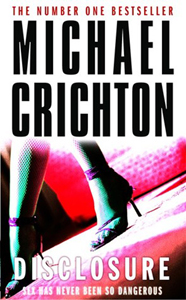
4. “Disclosure” (1994)
Around the time people wanted a “Jurassic Park” sequel, Crichton had the clout to write whatever he wanted. He penned “Disclosure” first, and it was turned into a movie within the same year. Similar to his later drive to write “State of Fear,” Crichton was bothered by a widespread misconception among the public: that workplace sexual harassment was a case of men going after women. Citing data, he argues that it’s power-based: The more powerful person harasses the less powerful. He illustrates this by fictionalizing an actual documented story but flipping the genders so the man is harassed by the woman. “Disclosure” is also an engrossing evidence-gathering thriller, as the claimant must figure out who his email “Friend” is. It’s fun to go back to the early days of email, which is also a time when CD-ROMs and virtual reality were thought to be the emerging dominant technologies. (Full review.)
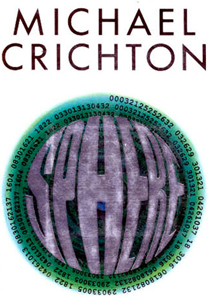
3. “Sphere” (1987)
Love it or hate it (and most people love it), there’s nothing else in Crichton’s catalog like “Sphere.” He envisioned it as a sequel to “The Andromeda Strain,” but it grew less grounded in science as he wrote it. Instead, it’s a classic Big Questions novel and the closest Crichton comes to getting spiritual. The titular alien globe – hidden on the ocean floor for who knows how long – gives people the power to manifest their thoughts into reality. In retrospect, we can compare “Sphere” to works as far back as Shakespeare’s “The Tempest,” but upon first reading, we don’t know what the heck this story is about. Enhanced by the isolated underwater setting, the trepidation of the unknown – and the sense that we don’t know reality like we thought we did – is more palpable than in any other Crichton novel. (Full review.)
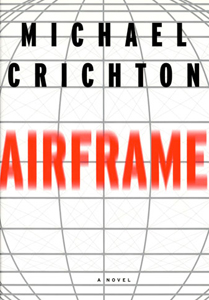
2. “Airframe” (1996)
Now we’re — ironically – grounded again with the novel Crichton found hardest to write. His hard work pays off as he gives a positive portrait of an everyday heroine within the airline industry while also showing the legal and quasi-legal corporatized corruption that surrounds her. Casey is positioned by her bosses as a scapegoat but tries to fight back by gathering evidence – similar to “Disclosure” but with stakes going beyond her own career. In a particularly gripping subplot, Crichton eviscerates media-as-entertainment by showing how TV investigative reports are planned out even before interviews are filmed. You wouldn’t think so at first glance – and I admit this doesn’t jump off the bookshelf as a must-read – but “Airframe” is a stay-up-all-night page-turner. (Full review.)
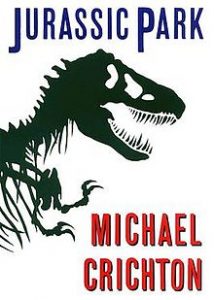
1. “Jurassic Park” (1990)
In retrospect, it’s an obvious idea to bring humans and dinosaurs together. Conan Doyle had done it a century before with his “Lost World,” but that was a pulpy adventure. “Jurassic Park” is different because Crichton makes it plausible that dinosaurs could be cloned. Scientifically speaking, it’s trickery worth scoffing at. Yet via Crichton’s prose, it’s magic (just don’t read the DNA stuff too closely). With corporate magnate Hammond, paleontologist Grant and stud chaotician Malcolm arguing about the appeal, morality and danger of cloning dinosaurs, we can’t help but buy into it. Besides, they’ve already been cloned, and it’s not long before the danger is unleashed. Spielberg’s movie is great, but when read afterward, Crichton’s novel is a smorgasbord of bonus scenes; it makes the film seem thin by comparison. Moments and ideas from this novel have been mined all the way up through TV’s “Camp Cretaceous,” allowing Crichton’s legacy to live on. (Full review.)
Click here to visit our “Jurassic Park” Zone.
Click here to visit our Michael Crichton Zone.
Main image by StockSnap from Pixabay

